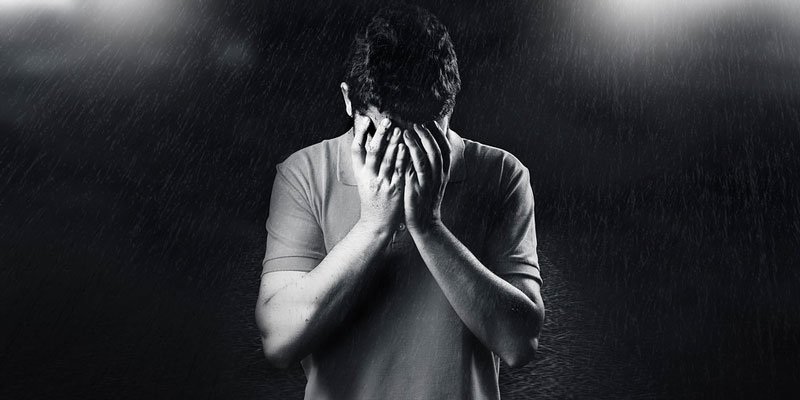Despite living in one of the most optimistic times in history, younger Americans are more fearful of the world than previous generations.
Part of this fear comes from the almost constant stream of news and information. Younger generations tend to view the news in black and white, good or bad terms, while the rest of the generation understands that assessing risk is not simply good or bad. There is a huge amount of grey area uncertainty involved.

We all know the formula for ratings and clicks in the news industry: fear. That fear has created a generation of anxious young people, with 42% of them now diagnosed with some kind of mental illness.
The downside of destigmatization
The good news is that we've made great strides in eliminating the stigma around mental health. Today, anxiety and most other mental health disorders are rarely considered shameful or stigmatized, especially among young adults.
A young woman named Makayla shares a video showing how many medications she takes for mental illness. Not too familiar?

But is it possible that the pendulum has swung too far in the other direction? Younger people are telling their colleagues, bosses and acquaintances about their mental health diagnoses, something older generations would never have dreamed of doing, then or now.
Too much information? (TMI)
Isn't it ironic that the kids who brought us “TMI” don't seem to understand what it means? Some young people are even using the TikTok video/social media platform to share some of the most intimate and personal details about their lives.
This is a young woman telling millions of people in a TikTok video that she found a wart on her genitals. (1.4 million likes) This is not a myth.

TikTok can be a non-stigmatizing platform to openly discuss mental health. That's a good thing, but TikTok often turns into a virtual town hall where people declare they are “self-diagnosing” a health condition — a condition like bipolar disorder or autism. Yes, I said “self-diagnosing.” That's not okay.
That self-diagnosis will be met with millions of affirmations from other self-diagnosed strangers. Strangers with absolutely no clinical education, training or experience. Strangers who claim to have bipolar disorder or autism.
The dangers of self-diagnosis
Thousands of young people are posting TikTok videos using the hashtag #AutismDiagnosis. This video by a person diagnosed with autism has gone viral, garnering 17.6K likes.
Do you think that in our efforts to destigmatize mental health, we've inadvertently created an entire generation of emotional hypochondriacs?
Badge of Honor
Yes, self-declaring a diagnosis like bipolar disorder or autism has become a badge of honor. And it becomes part of your identity. #bipolar #selfdiagnosis #anxiety
This self-diagnosis craze reminds me of my days in grade school when I had a cast on. I secretly hoped I would break something so I could have a cast on. Casts were cool. A cast was a badge of honor. Same with braces and glasses. But you can't diagnose an arm that isn't broken, just like you can't diagnose autism with a Google search.

don't worry be happy
Sure, increased awareness about mental health is a positive step, but the simple truth is that constantly thinking and talking about anxiety only makes the problem worse. Obsessing over your “pain,” “trauma,” or “diagnosis” is the opposite of healthy. This is called rumination, and it's unhealthy. So what's the answer?

don't worry be happy
As young people begin to self-diagnose, it may be helpful to ask them some questions.
Did you go out today?
Did you walk at least 5,000 steps?
Did you just sleep in or did you get out of bed before 10am and do something productive?
Are you properly hydrated?
Have you limited your doomscrolling or social media time?
Did you eat well today?
Did you sleep well last night?
The answers to these questions are likely no, but they are common sense questions that can get you out of a conversation trying to diagnose disease without a medical degree.
Big Finish
So let's review what we've learned so far.
First, we've done a great job of destigmatizing mental health among younger generations, and that's a good thing for us.
Second, we may have gone too far in our efforts to remove the “scarlet letter.” Young people now use various diagnoses as part of their identity.
Third, TikTok has effectively become a forum for exposing one's mental health to the world in a way that previous generations would never have dreamed of.
Fourth, many young people self-diagnose conditions such as autism or bipolar disorder as a “badge of honor” — no doctor needed.
Fifth, attention-hungry young people are labeling many of the everyday things that make us all anxious as disorders. Anxious memories of tough social situations in middle school are not a sign of Post-Traumatic Stress Disorder (#PTSD). Feeling anxious about tests is not Generalized Anxiety Disorder (#GAD). These are just part of growing up and do not require a Diagnostic and Statistical Manual of Mental Disorders (DSM-5) diagnosis.

Maybe the answer is for young people to go outside, touch the grass, get some fresh air. Or put down their smartphones and get out of bed. Or stop taking videos that make us dwell on things in life that we can't control. Sure, there are plenty of moments in life that make us feel a little anxious. Putting false medical diagnoses on our feelings is not the answer.
Big Benefits
I am a team of one. I have no entourage or security. I research and write solely for the pleasure of starting thought-provoking conversations. To grow my readership, I rely solely on referrals. If you know anyone who would enjoy thought-provoking conversations, please forward this article to them and encourage them to sign up. here.
Do not miss it! Subscribe now Get the top Alabama news stories delivered to your inbox.
















